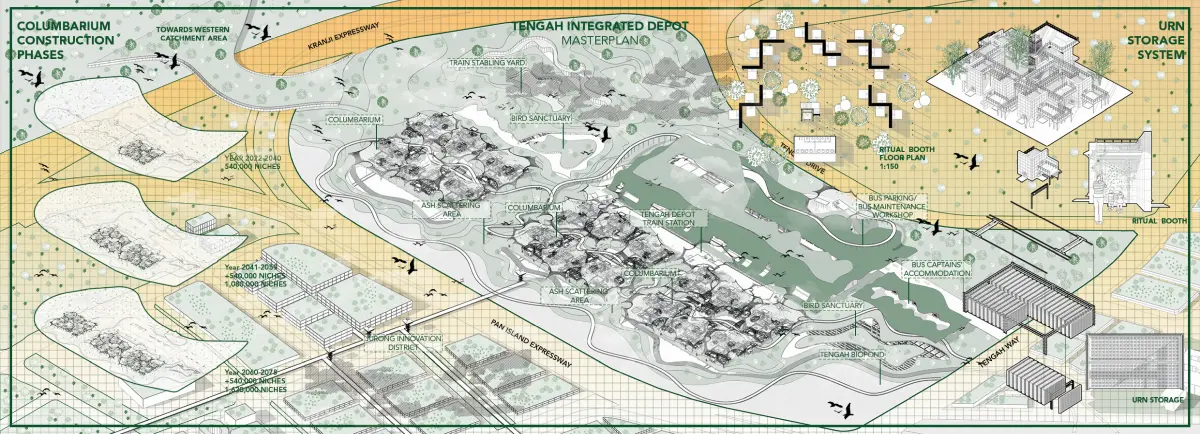
Rest Station
BY Muhammad Syukri Bin Matsuni
SUPERVISED BY Assoc. Prof. Cheah Kok Ming
STUDIO THEME ANTIFRAGILE FRAMING
Abstract
By 2030, Singapore aims to move towards a projected 6.9 million population. Hence, additional housing and infrastructure are required to support the rising population. As Singapore’s limited land space struggles to keep up with the needs of the growing population, the conflict between Singapore’s urban development and its environmental preservation is called into question. To date, Singapore has lost nearly 99% of its natural forest cover with substantial environmental consequences such as biodiversity loss, increased flood risk, and rising temperatures. Yet, more of Singapore’s forested areas such as Tengah Forest will be cleared to make way for urban infrastructures such as housing developments and transport infrastructures.
With the impact of urbanisation as a threat, how do we gain and become better from this situation? How do we strike a balance between Singapore’s urban development and its nature preservation with land space being a big challenge? Can the “City in Nature” vision be pushed further to allow for both man and nature to coexist?
As such, as a prototypical study, the thesis looks at the coexistence between an integrated train and bus depot within the upcoming Tengah Town Development and existing greenery of the Tengah Forest as a steppingstone between the Central nature reserves and the western Catchment Area to preserve the existing biodiversity that is and will be affected by the upcoming development. At the same time, it looks at the possible integration of a columbarium space with existing depots in Singapore as a study to free up existing columbarium for other developments which are often contested in land scarce Singapore, to look beyond monofunctional infrastructure and its current tokenistic nature of greening solution, as a network of systems to encourage a symbiotic relationship between man and nature.
Supervisor Comments
A provocative thesis about competing land use in Singapore between biodiversity and infrastructural development. The expansive landscape layout of the architectural representation is a reflection of the comprehensive resolution and an evocative story about the co-existence of the inanimate, the living and the wild. Its concluding remark is compelling, how one such integrated development of transport depot, columbarium and space for biodiversity could free up 5.4 times existing columbarium sites for other strategic development. The architectural outcome dissolves boundary and conflicts between nature and man-made, offering a paradigm for a place challenged by “less land, more yield”.
- Assoc. Prof. Cheah Kok Ming